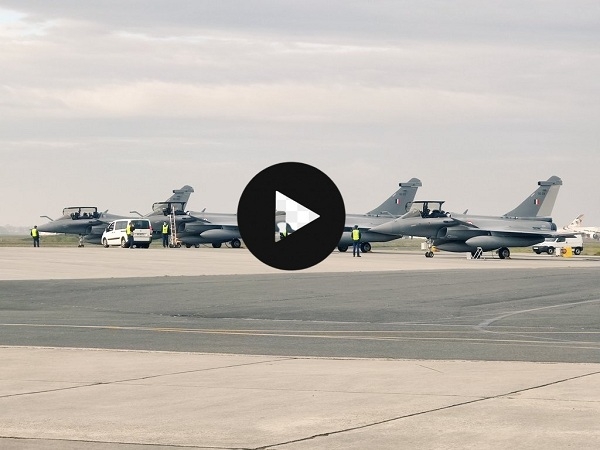WATCH: Fifth batch of Rafale fighter aircraft arrives in India!
Total Views |
New Delhi, April 22: The Indian Air Force (IAF) on Wednesday said the fifth batch of Rafale fighter aircrafts arrived in India on Wednesday flying a distance of 8,000 km from Merignac Air Base in France. The IAF thanked the French and UAE air forces for their refuelling support to complete the journey.
"After a direct ferry from MerignacAirBase, France, the fifth batch of Rafales arrived in India on April 21. The fighters flew a distance of almost 8,000 km with air-to-air refuelling support by Armee_de_lair and UAE AF. IAF thanks both the Air Forces for their co-operation," tweeted the IAF.

IAF chief RKS Bhadauria flagged off four Rafale jets from Merignac-Bordeaux airbase. Their arrival took the total number of Rafale fighters in IAF inventory to 18.
Bhadauria, who is on a 5-day visit to France, also went to a Rafale jet training centre. Arrival of the new batch will pave way for IAF to raise a second squadron of Rafale jets. As reported earlier, the new Rafale squadron will be based at the Hasimara air base in West Bengal. The first squadron is based at the Ambala air force station.
Also Read: Fourth batch of three more Rafale jets land in Gujarat; total reaches 14
Rafale joined the IAF last year in July-August and were soon operationalised. It should be noted, it also has been deployed for patrolling along the China front in eastern Ladakh and other fronts during the height of the China confrontation.
In September 2016, India had signed a deal with France for the acquisition of 36 Rafale multi-role fighter jets in a fly-away condition along with 13 India Specific Enhancements (ISE) under a €7.87 billion (Rs. 60,000 crore) Inter-Governmental Agreement (IGA).
Also Read: Official! IAF set to raise second squadron of Rafale in WB's Hasimara airbase
India-specific enhancements on the Rafales include a helmet-mounted sight, radar warning receivers, flight data recorders with storage for 10 hours of data, infrared search and track systems, jammers, cold engine start capability to operate from high-altitude bases and towed decoys to ward off incoming missiles.
The twin-engine jet is capable of carrying out a variety of missions – ground and sea attack, air defence and air superiority, reconnaissance and nuclear strike deterrence. It can carry almost 10 tonnes of weapons.